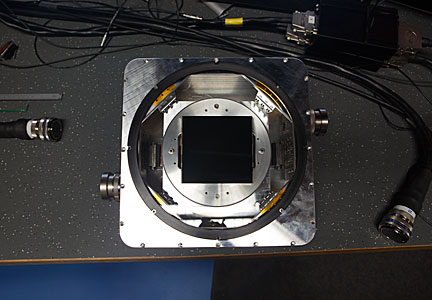ESPRESSO
Echelle SPectrograph for Rocky Exoplanet and Stable Spectroscopic Observations
At the Very Large Telescope Interferometer under the VLT platform at ESO’s Paranal Observatory, engineers and astronomers worked against the clock to build new tunnels and rooms to house one of the most eagerly anticipated instruments in the astronomical world: ESPRESSO, or the Echelle SPectrograph for Rocky Exoplanet and Stable Spectroscopic Observations.
ESPRESSO is the successor to HARPS, one of most productive and precise planet hunters. With 97 papers in 2017 alone, HARPS has been much in demand by astronomers around the world, and has been the most productive instrument at the La Silla Observatory for several years. This is one of the reasons why astronomers were greatly looking forward to the arrival of ESPRESSO on a much bigger telescope.
ESPRESSO can now take the search for exoplanets to the next level. It is fed by the four Unit Telescopes (UTs) of the VLT and its primary goal is to make very high precision radial velocity measurements of solar-type stars to search for rocky planets.
Stars and their exoplanets are bound together by gravity: an exoplanet orbits its distant parent star just as the planets of the Solar System orbit the Sun. But a planet in orbit around a star exerts its own gentle gravitational pull, so that the centre of gravity of the entire system (the barycentre) is a little away from the centre of the star and the star itself orbits about this point. This regular movement of the star along our line of sight creates a tiny shift in the spectrum of the star, through the Doppler effect. This minute effect can be detected by very sensitive instruments and is the evidence for the presence of a planet that can then be further studied. This tug of war between stars and their exoplanets can be seen (or rather, measured) by ESPRESSO.
ESPRESSO combines unprecedented radial velocity measurement accuracy with the large collecting area of the UTs. This means that we are able to gather light simultaneously from the 4 UTs and measure fainter objects in the sky with greater accuracy. HARPS has the precision to detect stellar motions moving at the speed of a gentle walking pace — 3.5 km/h! ESPRESSO is expected to be able to detect stellar motions at almost a snail’s pace — only 0.35 km/h — corresponding to an Earth-mass planet in the habitable zone of a low-mass star. It is expected that a vast number of planets with masses smaller than Neptune will be discovered.
The ESPRESSO instrument achieved first light with one of the VLT Unit Telescopes in December 2017 and first light with all four Unit Telescopes in February 2018.
ESPRESSO
The authoritative technical specifications as offered for astronomical observations are available from the Science Operations page.
| Site: | Paranal / Very Large Telescope |
| Telescope: | VLT Combined-Coude Laboratory |
| Focus: | Coude |
| Type: | Spectrograph |
| Wavelength coverage: | 380–686 nm |
| Spatial resolution: | 3.5 pixels |
| Spectral resolution: | |
| First light date: | February 2018 |
| Images taken with the instrument: | Link |
| Images of the instrument: | Link |
| Press Releases with the instrument: | Link |
| Data papers: | |
| Science goals: |
|
|
Consortium: |
|


